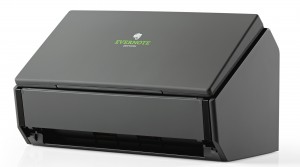 I’ve only got three phone calls I have to make today but I started at 11am and as I write this, it’s 11:13 and I am finished.
I’ve only got three phone calls I have to make today but I started at 11am and as I write this, it’s 11:13 and I am finished.
As you can expect and fair guarantee from any round of phone calls, they aren’t all finished and done with: right now I’m waiting for a call back from two people with more information and an email from the third. But the calls are all made and these issues are all underway and the response rate would be no different if I’d spent the day fretting over them.
And I do fret. Given that I’m a journalist and it is routine to phone people up, I find it really hard calling for myself. So I do several things to make it better. To make me do it, really.
There’s quite a bit about this in The Blank Screen book (UK edition, US edition) but since writing that I’ve been focusing on one particular piece of advice I learnt for it. I’ve made making calls be my thing, be the work I have to get better at. And I’ve done it by making days like this. All of which boil down to this:
Produce the calls.
You don’t go into any meeting and you don’t ever pitch without knowing who you’re talking to and what it’s about. So I take some time during the morning to build up a list in Evernote of who I am calling. I run my life through the To Do software OmniFocus and it’s very easy to use that to get a list of calls to make: I just tap or click on a button marked Phone and it shows me every call I have to make in every project, ever. But if I then start writing that out in Evernote, I can build up this:
Who I’m calling at what company
What their phone number is
The specific aim of the call and the most recent conversation or correspondence we’ve had about it
All obvious stuff but each line does something in particular. The first one, who I’m calling where, that acts as much as a heading as it does a To Do. Then the bit about their number is crucial – I know that sounds obvious, I know you’re thinking that without it I won’t have much luck calling them but it’s more than that. The point is having the number right there. See the name, ring the number, go. That’s the plan.
Then the specific aim is equally important to both sides. Usually there’s just one thing you can get done in a call so I pick that and we’re off. Knowing it, knowing it precisely and having written it down focuses me on it so that I am right on the topic and they get a quicker call out of me. And similarly, how we last left something means I sound like I am on top of things, I am fully aware of what we’re doing and also that I’m moving this stuff on, I’m not hanging about, I’m not kidding. Without being rude or abrasive, you know I am working and this is business and as much as I may like nattering with you, today we’re doing this thing.
So I’ve spent the morning building up that Evernote note in between other jobs, then it comes to 11am and I start. See the first name, see the number, I’m dialling it before I can hesitate and it’s ringing while I’m fixing the rest of the information in my head. Ring, speak, done, next. See the second name, see the second number, I’m dialling.
I do also use Evernote to make notes about the calls and that’s not brilliant yet. What I find is that I will build up a lot of information under a call but then the next time I have to call them, that information is back in the previous day’s call list. I need to get more organised about copying the information out and into a single place per person or per project or per something. Not sure what yet.
But it’s surprising how much sheer data you can write up about a call. I record just whether I got them or voicemail, I make a note that I said I’d call back and perhaps when if I said a particular time. Also any numbers they need to tell me like fees or contracts or purchase orders. The list goes on and on.
One extra is that I also record the time of the call. I do that in Evernote but using a TextExpander snippet. As the phone rings and as I’m reading, I will type the words “Called at…” and then the TextExpander snippet ;ttime – a semi-colon and the word ‘ttime’ which pops in the current time. If it’s a long call or I’m routing through a hundred service desks who keep me waiting, I’ll log the time along the way because why not?
Then the last thing I do after all the calls is I make a note of them in a separate Calls Made list in Evernote. This has no function at all except to make me want to make more calls. It’s showing me that I’ve made 162 phone calls so far this year and, hand on heart, I wish I hadn’t looked because I thought it would be more impressive than that. Just 162 in five months? I promise to do better.
Starting now. I’ll just add today’s 3 to the list and I’m on 165. That’s a bit better.


